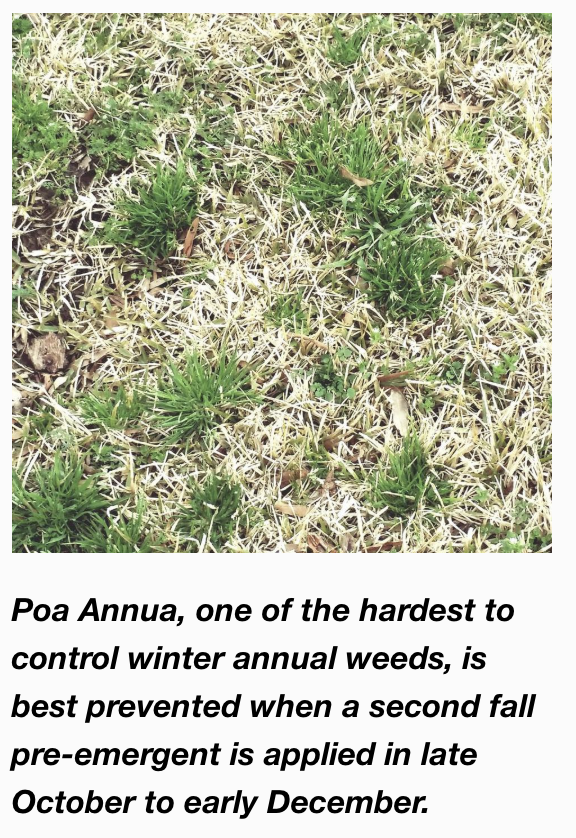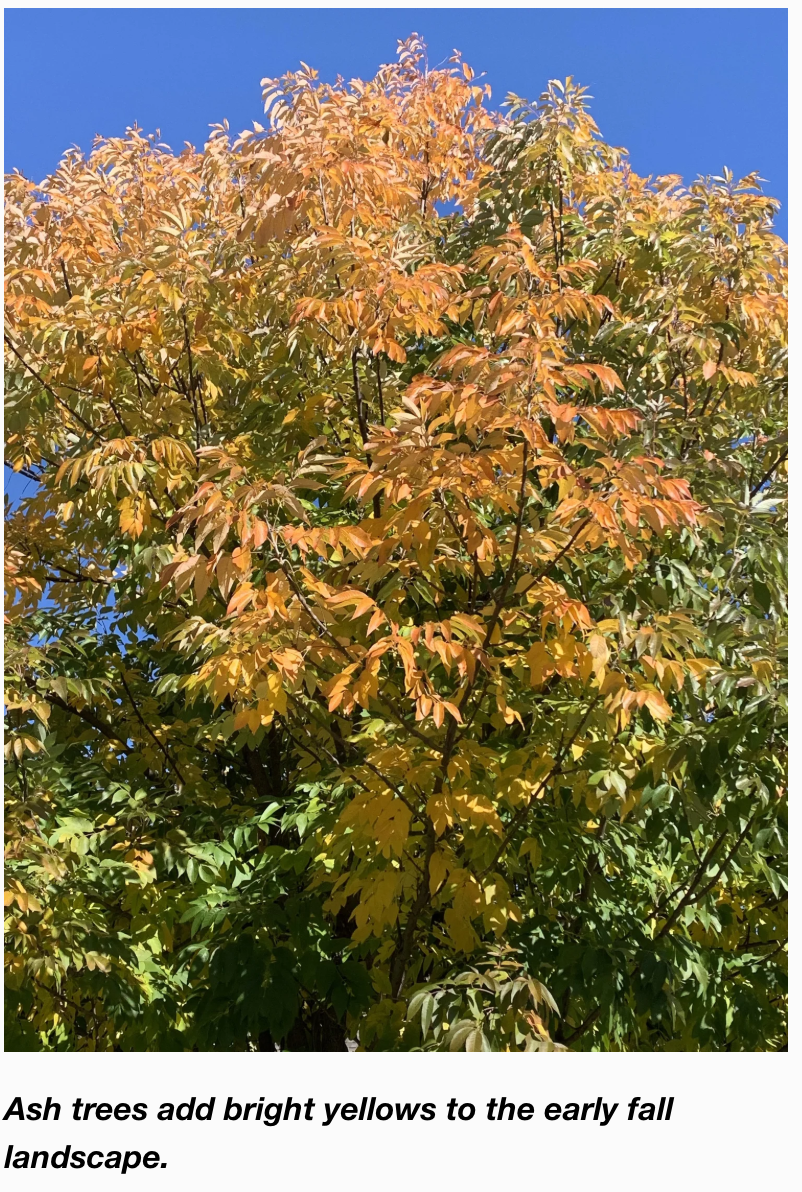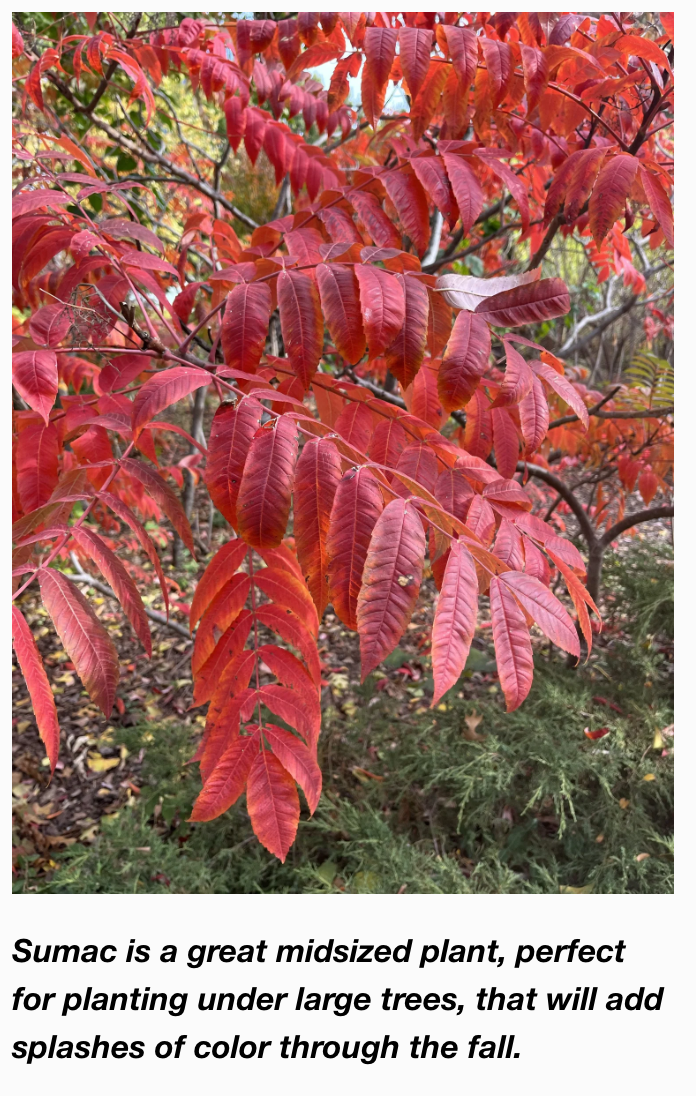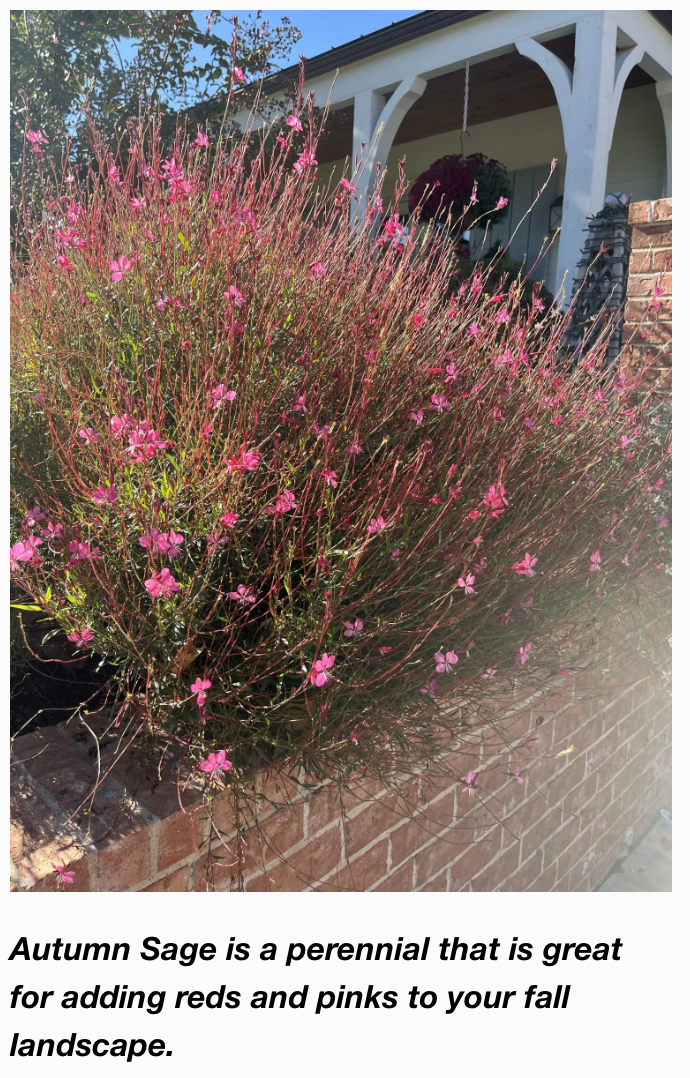Your Best Lawn.
November Lawn & Landscape Tips.
November Lawn & Landscape Tips.
The weather the last couple of days of October ushered in the feeling of fall.
Fall… Crisp jacket wearing mornings.
Fall… Pleasant short sleeve afternoons.
Fall… Red and yellow leaves brightening blue skies.
Fall… Warm season lawns gradually fading from summer green to winter browns.
Fall… Cool season lawns adding rich green hues to the landscape.
Fall… What a great time to be outside!
Fall... November… Less lawn and landscape tasks, right?
Well, yes. But, even though there are less, there are still very important tasks if your goal is to have your best lawn and landscape.
Lawn Fertilizer
Fescue and rye lawns need their second fall fertilizer application in late October through November. Fall is the best time of the year to fertilize cool season lawns. Bermuda lawns do not need any more fertilizer this year. A good lawn care program will fertilize cool season and warm season turf on a different schedule making sure they each receive fertilizer at the correct times of the season.
Learn More: Fall…Does My Lawn & Landscape Still Need Fertilizer? October 19, 2025
Weed Control
This month is a good time to control broadleaf weeds in your warm season and established cool season lawns. Dandelions and other broadleaf weeds are typically small at this point and easier to kill. If you overseeded your lawn with fescue or rye this fall, do not apply any weed control products until the new grass is well established and has been mowed a few times.
If you have not applied a pre-emergent to your lawn this fall, please do so as soon as possible. And if you applied a fall pre-emergent in August or September, a second pre-emergent should be applied between mid-October to early December for best prevention of winter weeds. A clean start next spring is the result of two timely fall applications.
Learn More: Why A Second Fall Pre-Emergent Is Important. October 12, 2025
Fertilizing Trees and Shrubs
Once your area has received a freeze, it is time to apply a good balanced fertilizer to your trees and shrubs. Our soil temperatures remain above 40 degrees most of the winter and plant roots remain active. Because nitrogen leaches from the soil, it needs to be replaced. Our experience has found that a late fertilizer application to feed the roots will aid the health and beauty of your plants next spring.
Learn More: Fall…Does My Lawn & Landscape Still Need Fertilizer? October 19, 2025
Seasonal Color Planting
If you have not removed your summer color and replaced them with pansies and kale, now is the time to do it. Soon, as nighttime temperatures continue to cool, any remaining summer color will be done for the season. Because soil temperatures stay warm through November, you still have time to plant pansies.
Learn More: Coming Soon To A Landscape Near You – Fall Seasonal Color! September 21, 2025
Spring Bulbs
November through early December is the best time to plant spring flowering bulbs such as daffodils, hyacinths, and tulips. I have never heard anyone in March say they wish they hadn’t planted bulbs last fall. But, every year I hear someone say how much they wish they would have taken the time to plant bulbs last fall.
Learn More: Plan Now. Plant Next Month. Enjoy Next Spring! October 26, 2025
Lawn Mowing
Warm season lawns, bermuda and zoysia, most likely have had their last mowing or will very soon. Do not scalp warm season turf to end the growing season. Cool season lawns, fescue and rye, will continue to grow and flourish. Continue to mow fescue and rye on a regular schedule. The best height to maintain your cool season lawn in the fall is 2.5” to 3”.
Leaf Removal
It is important to keep leaves cleaned up. Allowing them to decay on the lawn promotes fungus and disease. If you have a cool season lawn, it is critical to keep the leaves removed. Fescue and rye need light. Allowing leaves to remain on the lawn for extended periods of time will kill areas of your lawn. My favorite way to remove leaves from my fescue lawn is to mulch mow every 5-7 days. I find that mulching small amounts of leaves back into the lawn improves my soil structure. I only rake and bag leaves when leaf drop is too heavy to mulch mow.
Learn More: Leaf Clean-up Is A Matter Of Lawn Health. November 10, 2024
Irrigation
Until we received a good rainfall last weekend, most of the metro area had gone over 50 days with only a couple of very small rainfalls. A good rainfall headed into November, one of our driest months, was much needed by your lawn and landscape.
Lack of moisture is a major cause of winter damage to trees and shrubs. Particularly, your evergreens need moisture even when the landscape is dormant.
With cooler temperatues and shorter days, you may not need to water as often. But it is too early to stop watering all together.
This time of year, I will either set my irrigation to run every 4 days or leave it on every other day and turn it off for a few days when we receive at least a ½” rainfall.
If your irrigation backflow device is located below ground, inside your garage/house, or has winter protection (heat tape, insulated bag, and cover) you do not need to winterize your system for the winter. Continue to use the system as needed on nice days throughout the winter.
If your system’s backflow is not protected from freezing temperatures, consider adding heat tape, an insulated bag and cover. This will allow you to protect your landscape investment by watering as needed this winter. You can also take it one step further and install a rain/freeze system that will shut the system off when it is too cold, or we have had rain.
Key Point – Most landscape winter damage occurs when the top few inches of soil are dry when temperatures are below freezing.
Learn More: Fall Irrigation Changes Coming Soon! October 5, 2025
Seeding Fescue
The best time to overseed fescue is September through October. If you have not seeded this year and need to, even though we are into November, you can still have success seeding in early November. Remember the keys are good seed to soil contact and keeping the seed moist until it germinates. With cooler temperatures you can expect it to take a little longer to see results than the typical two weeks, and depending on temperatures in November and December, the results may not be fully seen until spring.
Learn More: Plan Now. The 4 Most Common Ways To Fail At Establishing Fescue. September 7, 2025
So, November doesn’t mean it is time to put up the lawn and landscape tools. Your lawn and landscape still need plenty of attention.
Your best lawn and landscape next spring is the result of how well you finish the season this fall.
If you have questions or need help, send us an email, or give us a call.
Lorne Hall
Hall | Stewart Lawn + Landscape
(405)367-3873





























